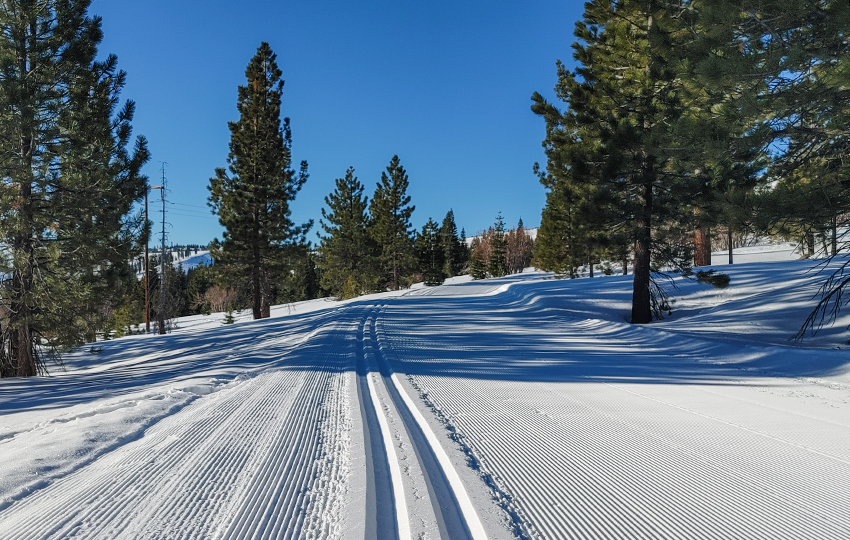
November of 2022 marked the beginning of my ninth cross-country ski season. Now, when I talk about a season I don’t just mean skiing on the weekends. Or, only during the best possible snow conditions. I’m talking about consistently logging upwards of (and sometimes over) 100 days of xc skiing every winter in every imaginable condition and environment. Also, as an xc ski instructor I take and teach private lessons, as well as group clinics. However, one of the most beneficial approaches to my training is that I’ve split every ski season 50/50 between skiing in the backcountry and on groomed terrain. And, I believe, this approach to cross-country skiing has completely accelerated my learning process.
To some people, spending multiple winters of doing all of the above may sound like a huge commitment to anything, let alone a niche sport. But to veteran cross-country skiers, it’s a drop in the bucket. That’s because they know that training to become an excellent classic cross-country skier is essentially a lifetime pursuit. There are, after all, so many subtle elements involved with mastering classic technique.
Support Tahoe Trail Guide with a financial contribution via PayPal (single contribution) or Patreon (reoccurring contributions). Your support of Tahoe Trail Guide is very much appreciated!

For the above reason, I always try to impress upon people during their first lesson with me that classic xc skiing is deceptively complex. Sure, you can learn to walk and shuffle around on cross-country skis easily enough during your first lesson. And you’ll probably even learn, at the same time, to stop yourself on an intermediate hill.
But to become masterful and display elegance while diagonal striding in any condition takes a very, very, very long time.
I don’t say this to discourage you from continuing your efforts or trying (for the first time) to cross-country ski. Rather, I offer this perspective so that you may better pace yourself on this epic journey in which you’re embarking. Go easy on yourself, but stay connected to the learning process.
Ultimately, I love cross-country skiing and I want you to love it too! So to support you along your journey, I’ll provide whatever insight that I can. And today’s discussion is all about breaking routine and getting out of your comfort zone 🙂
Namely, it’s about embracing both backcountry and groomed terrain in pursuit of becoming a better cross-country skier.
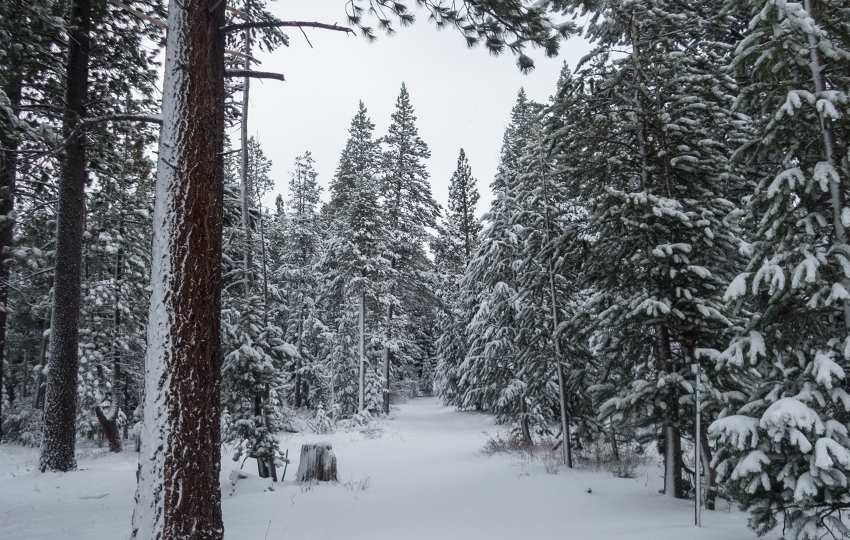
Training = Goals = Success
I frequently talk about establishing goals and then going after them because having goals and defined projects leads to success. This doesn’t mean that everything I do in life is simply about placing a check in the box. Nor do I embrace the “bucket list” approach to life, which I find mostly to be superficial and meaningless. But I’ve found that without having a clearly defined objective in mind, it’s difficult to accomplish anything of value.
After all, without knowing where you’re going how are you ever going to get there?
Just as important as defining your goal(s), however, is to choose one that’s actually relevant to you. For example…
- Does the goal apply to the themes in your life?
- Will the goal support your overall life experience?
- Or, does the goal tie into the bigger picture of your life?
- And, is the insight gained from achieving the goal something that you can build upon or apply to other aspects of your life?
Or is the goal just something fun that you’d like to try once, just to say you did it?
Obviously, not all goals need to meet the criteria of being relevant to your life. However, I believe that your goals will be more meaningful if you’re able to tie them back to the central themes of your life. And, as a result, you’ll be more invested in achieving those goals.
Goals inform your decisions. They provide a framework from which to operate, enabling you to focus your efforts in a way that’s both efficient and effective.
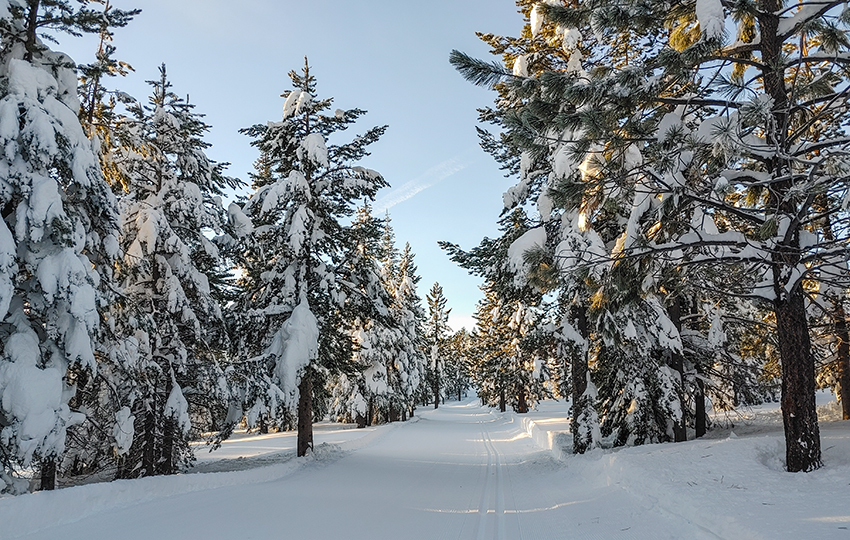
Be Specific When Defining Your Goal(s)
Keep in mind that you’ll really only reap the benefits of having a goal if it’s specific. Therefore, wanting to become a better cross-country skier is too vague. I mean, anyone with a hobby or passion naturally wants to get better at performing the activity in question.
So what does becoming a better xc skier actually mean? And how could a person possibly quantify that goal so that they knew that they achieved it?
Since I can only really speak for myself, I’ll define the goal of becoming a better xc skier in the context of my life. But if you’re also seeking to become a better cross-country skier, I suspect that we share some similarities in passion. Namely a love of nature, winter adventure, human-powered movement, efficiency, and safety in a wilderness environment.
Therefore, becoming a better xc skier ultimately ties into my love of exploration.
I may not be much of a world traveler, but I’ve always been passionate about exploring. Whether that’s been by seeing a little bit of everything on a longer journey, like when I thru-hiked the Appalachian Trail (1999) or Tahoe Rim Trail (2014). Or when it’s been about seeing as much as possible on a short excursion, like my experiences participating in Big Years (2019, 2021, 2022).
So, for me, wanting to become a better cross-country skier stems from my desire to explore more terrain. I want to discover new locations, see beautiful scenery, and find plants and wildlife in a winter setting.
Therefore, I need to possess the necessary skills that’ll enable me to travel anywhere (safely and efficiently) on cross-country skis. I need to learn exceptional technique, and how to modify it in any condition or environments And, I should probably work toward becoming proficient in a whole host of other backcountry-related skills.
But just because exploration drives my passion doesn’t mean that it needs to be your main motivator. Your goal(s) could be great or small. They could simply revolve around exercise, weekend adventures, or being safe on cross-country skis while descending hills. Or, you might just want a more effective way in which to fend off cabin fever during the winter. Maybe you want to compete in your first xc ski race or join a dedicated xc ski club for the community aspect of skiing.
The nature of your goal(s) is your business. But the important thing to remember is that you need to understand your reason for wanting to become a better cross-country skier. Be as specific as you can be when defining your goal(s). And, ideally, choose goals that are relevant to the broader context of your life.
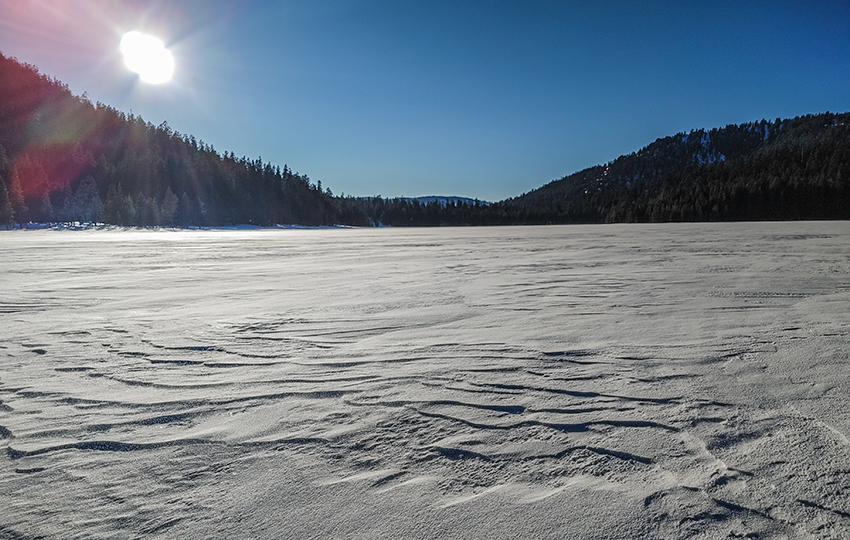
Embrace the Idea of Becoming a Better Skier Versus Learning to Ski Better
Just to help you further clarify your goal of becoming a better skier…
I realize that learning to become a better skier sounds a lot like learning to ski better. And I admit that this concept is, on some level, a game of semantics. However, when you get down to brass tacks they are two separate pursuits.
And I believe the former to be more desirable than the latter.
To me, learning to become a better skier demands that you take a comprehensive approach to the skiing and outdoor experience.
On the other hand, learning to ski better seems to me to be dedicated primarily (if not solely) to learning good technique. And this is often accomplished at a groomed xc ski area because ideal technique can really only be sustained in an ideal environment.
Without question, it’s important to learn good skiing technique. I always encourage this because it’s the basis of the skiing experience. However, it’s just as important to know how to adapt that good technique to any environment. And this most likely will require you to venture off the beaten trail.
For example, the same angle of terrain in the backcountry compared to one that you’d find at a groomed resort will require far more improvisation. Chances are, you’re not going to be able to just beeline or even snowplow down that backcountry hill like you would a comparable hill at the resort. So negotiating variable backcountry terrain requires you to expand your understanding of technique and route selection (among many other things).
As a better cross-country skier you’d also know, for example, that the snow is seldom uniformly consolidated in the backcountry. So, you can’t consistently push off with the same aggressive force that you would when diagonal striding in groomed tracks.
You have to tune in to what’s going on beneath your skis even more in the backcountry lest you plunge your skis through breakable crust, for example. By being a better skier compared to learning how to ski better, you’d also know that the snow near tree wells is unpredictable and, therefore, to be avoided.
Again, becoming a better skier entails far more than just learning good technique.
Ultimately, this is the age-old debate between wisdom versus intelligence and street smarts versus book smarts. There are merits to both approaches but learning to be a better skier, I believe, yields a more well-rounded experience than just learning to ski better.
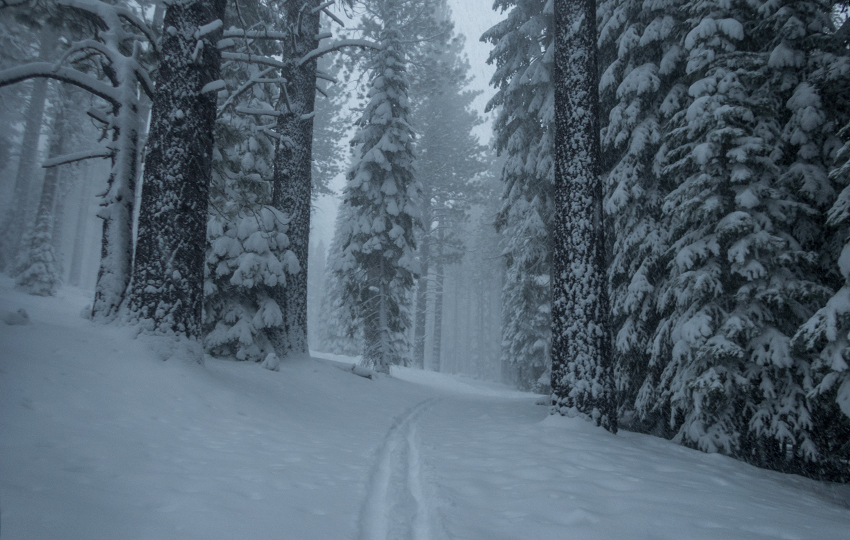
A Comprehensive Approach to Learning
In the following sections, I’ve included words and phrases that I associate with backcountry and groomed terrain environments. I’ve also included some brief discussion as to how they might apply to your cross-country skiing experience. My hope is that you don’t see them as lists of pros and cons. Rather, I’d like you to understand how embracing all of these concepts are beneficial for becoming a better and more well-rounded cross-country skier.
As far as I’m concerned, each environment supports the other and vice versa. And I truly believe that you’re missing out if you’re not skiing in both backcountry and groomed terrain.
Consistently.
So not just mixing it up one or two days each month or a couple of days during the entire season. Instead, try to ski consistently in both environments every week if it’s at all possible.
Again, I split my cross-country ski seasons in half between skiing in the backcountry and on groomed terrain. And, let me tell you, this approach has made for an accelerated learning experience as well as exciting and adventurous winters!
Keep in mind, that most people don’t approach cross-country skiing in this manner. Usually they either ski strictly on groomed terrain or they only cross-country ski in the backcountry. Seldom do they overlap, which I’ve always found odd.
Cross-country skiing, after all, says it right there in its name (“cross country” aka “across the country”). So, ski everywhere!
Gear Considerations
I do understand that skiing in both environments is more expensive since you’ll have to own at least two sets of xc ski gear. I also believe, though, that owning proper gear is necessary to fully experiencing either environment.
And owning a set of track skis and backcountry xc skis guarantees that you’ll be able to ski no matter what. For example, you won’t need the ski resort to be open and groomed (especially pre/post season or during a snowstorm). Or if the snow coverage in the backcountry is lacking during the regular season, you can often still ski at groomed xc ski resorts. This is because the resorts actively managing their snowpack in order to turn a profit. They may be operating with limited trails, but skiing is skiing.
In the end, it’s worth it to me to have multiple gear options because it opens up so much more terrain in which to explore. And it ensures that you can keep logging xc ski days no matter what. And that means more training, which leads to becoming a better xc skier!
Characteristics of Backcountry Cross-Country Skiing
At the heart of backcountry cross-country skiing is unpredictability. This is because backcountry terrain is wild and unkempt. To clarify, I consider any location to be “backcountry” so long as it hasn’t been machine groomed. This broad definition can include the most remote mountain range or the meadow in your local municipal park.
- Learning Environment: seldom ideal, uneven, variable, unpredictable, breaking trail, laying tracks, modify technique, adaptation, experimentation, spontaneity, playfulness, breaking routine, stabilization, balance, agility, better reactions, increased resistance, strenuous, fitness, finesse, self-reliance, new perspective, crust skiing in spring
- Safety: open space, wilderness, reading terrain, risk assessment, natural debris, unseen dangers, various obstacles, unstable snowpack, avalanche aware, know your limits, know when to turn back, isolation
- Exploration: access, convenience, anywhere there’s snow, closer to home, route selection, trail blazing, wander versus destination, taking frequent breaks, intimacy with nature, solitude, dogs are usually allowed
It may seem like what you see is what you get when it comes to backcountry terrain. But, the truth is, you can never be 100% certain of the snowpack. From a distance, the snow often looks inviting. But, upon closer inspection, you may discover that it’s wind-scoured, hard-packed, and rutted out. Or, perhaps the snow is so dry and deep that travel becomes a total stomp walk for survival.
You definitely can’t know exactly what’s lurking just beneath the snow’s surface, either. Did that small hump of snow on the trail up ahead accumulate based on a unique wind pattern? Or, is there a bush or boulder waiting to either collapse beneath your weight or halt you in your tracks?
Any of those scenarios can lead to a less than desirable cross-country skiing experience. And I completely agree that it can be more of a slog at times based on snow conditions. But if you choose to accept the fact that every backcountry excursion is filled with unpredictability, you’ll see that the backcountry presents countless learning opportunities.
There’s much wisdom to be gained by venturing into the backcountry so long as you’re willing to embrace its unpredictable nature. And the key elements to this approach is that you dial back your expectations, remain open to all possibilities, and modify your technique to accommodate the specific backcountry conditions in which you’re faced.
But learning how to deal with all of this adversity will immeasurably aid you in becoming a better cross-country skier.
Characteristics of Cross-Country Skiing on Groomed Terrain
The essence of cross-country skiing on groomed terrain is stability. Even in the most challenging conditions at a groomed cross-country ski area, you can be sure that the trails will essentially be stable. Sure, they may be a little icy or slushy at times. Or, fresh snow may fill the tracks and cover the skate lane because the snow kept falling after the groomers clocked out for the day.
The trails, however, will ultimately be stable because grooming operations ensure it. That is their purpose, after all. And this is the main reason that people pay to ski at groomed cross-country ski areas.
- Learning Environment: stable, predictable, firm surface, consolidated snow, ideal conditions, long distances, variation in terrain (beginner, intermediate, advanced), educational opportunities, instructors, lessons, clinics, tips from other skiers (often unwanted), community, opportunity to watch other skiers (try to only focus on the ones that model good technique), audience of other skiers (can feel like pressure to perform)
- Safety: clear lanes, good visibility, few natural obstacles on the actual trails, other skiers become the obstacles to avoid, firm snow surface, steep trails, ice and slush (freeze/thaw cycle), glazed tracks from repeated use, ski patrol, fellow skiers can provide assistance, signs, maps, warnings, huts, all trails lead back to the lodge,
- Exploration: cost to access, cost and time due to distance from resort, convenience due to parking, comfort due to lodge, established trails, known distances, few access points to trail system, routine, habit, tracks, symmetry, rhythm, pace, speed, destination versus wander
Consolidated snow with a uniform surface is the ideal situation for executing ideal cross-country ski technique. This is the case whether you’re diagonal striding or skate skiing. And this is regardless of whether or not there are any tracks laid on the trails. It’s slightly more challenging to diagonal stride without the tracks. However, if you have the striding skills it really shouldn’t matter. You just won’t be able to ski quite as fast as if there were tracks.
On that note, many smaller xc ski grooming operations often only groom a skate lane. Laying tracks is a pretty specialized skill requiring special gear (track pan). Sometimes those smaller operations just don’t have the expertise or the track pans.
Even at large-scale groomed cross-country ski areas and resorts, however, you’ll often find large sections of groomed trail without tracks. This may be due to the angle of terrain or if the trail features lots of sharp turns. Or it could be because there’s not enough snow on the trail to accommodate a track pan. Basically, in thin snow coverage the groomers will pull up the track pack because they don’t want to risk digging into the dirt.
But, again, the stable and predictable surface found at groomed xc ski areas is what counts the most.
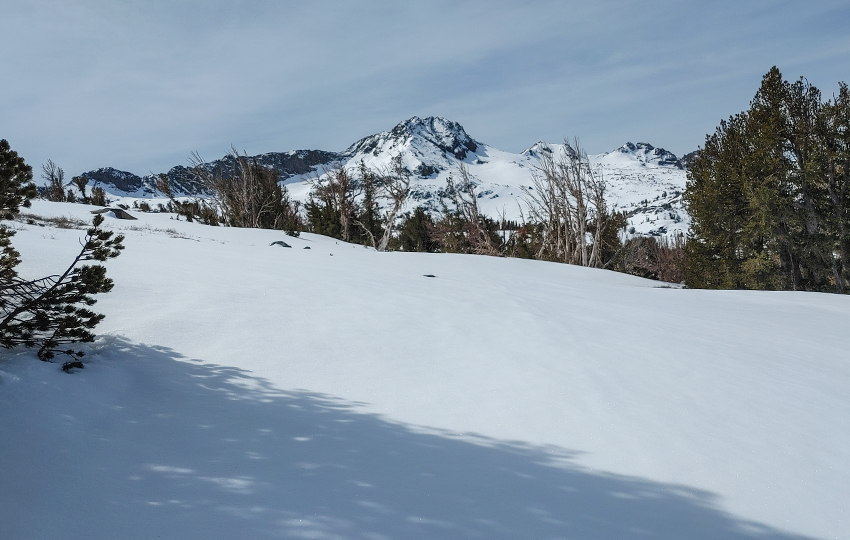
Skiing Off-Piste
Do you have a season pass at a groomed cross-country ski area or resort and want to get your money’s worth? You can still access “backcountry” terrain consistently in this case by bringing your backcountry xc ski gear to the resort. Skiing off-piste or off-trail is a time honored tradition. And if you do have a season pass, access is guaranteed to that backcountry terrain.
All of that said, always heed access and closure signs. There’s plenty of avalanche terrain located within the bounds of any given groomed resort. So you’ll run the risk of getting caught in an avalanche if you disobey those closure signs (worst case scenario). Otherwise, assuming you don’t trigger an avalanche and die, ski patrol will generally just pull your pass and you won’t be able to ski at the resort for the rest of the season. So heed those signs when venturing off-trail.
But skiing off-piste is great because you can benefit from the trail system. Basically, access to great stretches of terrain is a lot easier because your approach is far less strenuous. Just follow the trails until you reach your favorite “drop in” points, and then lather, rinse, repeat
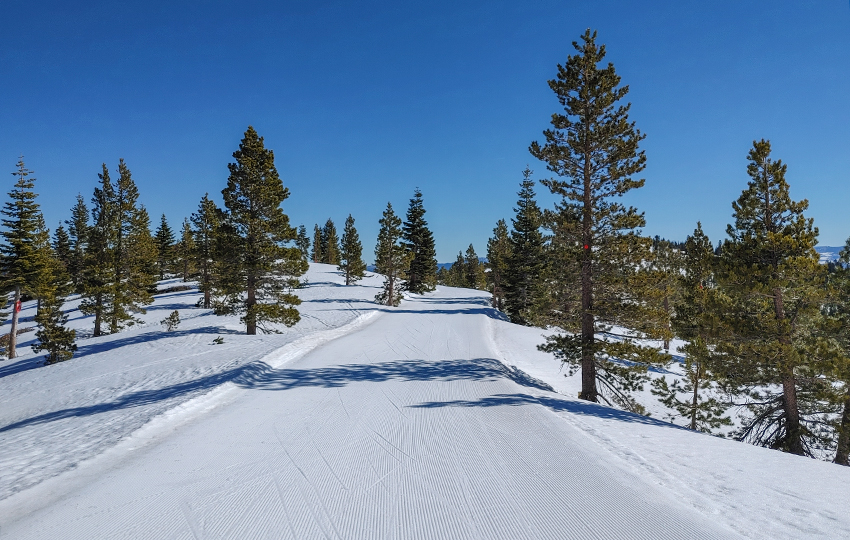
A Brief Note to Racers
I understand that my approach isn’t necessarily ideal for those of you seeking to become a better xc skiing racer. That is, splitting your season 50/50 between groomed and backcountry terrain. However, I still believe that skiing in the backcountry to one degree or another throughout the season will yield many benefits. By doing so you’ll gain new perspective by breaking out of your routine, develop better stabilization in your fine-tune muscles, and increase your confidence when skiing in variable terrain.
You’ll essentially become a well-rounded skier capable of adapting to any environment. And, you’ll have a lot of fun doing it!
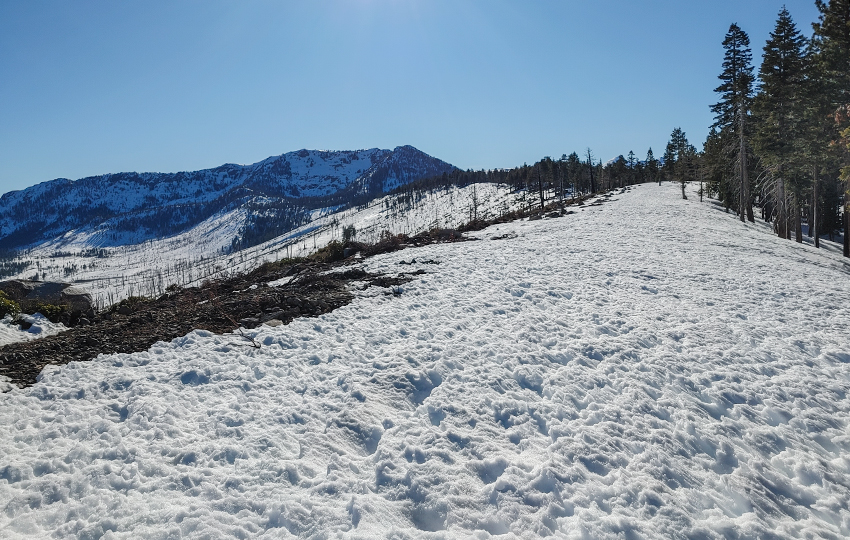
Parting Thoughts
Cross-country skiing has been one of the most challenging sports that I’ve ever participated in. And I started relatively late in my life at age 39. I’m fortunate, however, to have found a very supportive cross-country skiing community at Lake Tahoe.
As I mentioned above, I’ve participated in numerous lessons, clinics, and other xc ski learning opportunities. All of which have helped me to become a proficient xc skier. Much more so than had I gone it alone. In addition to the formal educational opportunities on groomed terrain, however, I’ve embraced cross-country skiing in the backcountry. And I’ve found that this has had one of the biggest impacts on my learning experience.
Honestly, though, applying lessons learned in a controlled environment to the “real world” has always been an approach that I’ve used when learning new skills. It’s like plein air painting rather than just creating art in the studio. I was a professional massage therapist for a number of years and routinely volunteered my services at outdoor sporting events. And when I actively trained in the Japanese martial art of Aikido (approx. 14 years), I often trained outside. When training off the mat I always gained new perspective while learning to deal with uneven footing, for example.
There are many ways to get out of your comfort zone and break routine. You need to be willing to do this if you really want to get good at something. This is because greatness seldom manifests, let alone thrives, in a vacuum.
So I always recommend going all in when learning new skills. That is, of course, assuming that the activity in question is of genuine interest to you and falls in line with the bigger picture of your life. Also, you should be able to clearly define some goals within the realm of the activity in which to pursue.
What do you need to do to become a better cross-country skier? And, how can you go about accomplishing that? Post your thoughts in the comment section below 🙂
Cross-Country Skiing Explained Articles and Videos
Please note that I wrote and produced the Cross-Country Skiing Explained series of articles and videos with the beginner and intermediate cross-country skier in mind. This is the demographic for whom I most often serve(d) while working in the outdoor recreation industry at Lake Tahoe. I basically treat these articles and videos as extensions of the conversations that I have (had) with those customers.
That said, expert skiers probably could take away something of value from these resources. Just know that I don’t address race-oriented philosophy, technique, or gear selection.
Considerations for buying cross-country ski gear (new and beginner xc skiers)
- Intention, Types of XC Skis, and Whether to Buy New or Used (Part 1)
- How Much Gear to Acquire, Evaluate Your Commitment, Value of Taking XC Ski Lessons (Part 2)
- Can One Set of Classic Cross-Country Skis Work for Groomed and Off-Track XC Skiing? (Part 3)
- Can I Use One Set of XC Ski Boots for All of My Cross-Country Skiing Needs? (Part 4)
- Overview of Off-Track and Backcountry Cross-Country Ski Gear
- Invest in Technique More than Gear
Classic Cross-Country Ski Components
- Introduction to Classic Cross-Country Skis (Part 1)
- Geometry of Classic Cross-Country Skis (Part 2)
- The Grip Zone of Classic Cross-Country Skis (Part 3)
- Types of Bindings for Classic Cross-Country Skiing (Part 4)
- Ski Boots for Classic Cross-Country Skiing (Part 5)
- Classic Cross-Country Ski Poles (Part 6)
- FAQs about Classic Cross-Country Skiing
Waxing Your “Waxless” Cross-Country Skis (for beginner and intermediate xc skiers)
- Introduction to Waxing Your Waxless XC Skis
- Step-by-Step Waxing Tutorial
- FAQs About Waxing Your Waxless XC Skis
Cross-Country Skiing Techniques, Demonstrations, and Related Concepts
- Outdoor VLOG (emphasis on the cross-country skiing experience)
- Cross-Country Skiing in Challenging Conditions
- Considerations for Winter Adventure in Lake Tahoe’s Backcountry
- Using the Side-Step and Herringbone Techniques in the Backcountry
- 10 Tips for Spring Cross-Country Skiing in the Backcountry
- 5 Reasons to Love Spring Cross-Country Skiing
- Considerations for Cross-Country Skiing During the Fall and Early Winter
- Discussing the Goal of Becoming a Better Cross-Country Skier and Embracing Backcountry and Groomed Terrain in Pursuit of that Goal
- The Cross-Country Skiing Experience: Immersing Yourself in Winter
“What do you need to do to become a better cross-country skier?”
You need to practice a lot, like you are saying, Jared, and when there is no snow it is very effective to roller ski in order to get this practice. The continuity in practice that then comes about is really making a difference, not the least in terms of strength. However, roller skiing is much more dangerous than skiing so you should not be as daring on roller skis that you perhaps are on skis.
Thanks for the feedback, Magnus! One of these days I’ll get myself some roller skis so I can stay more connected to xc skiing in the warmer months. We have some great locations around Tahoe for V1 summer practice on long, uphill, and out-of-the way scenic roads.
Although, I am going to make the effort to xc ski at least once per month for the entire year (2023) seeing that we have so much snow this winter. haha That said, the sessions will be more for fun that actual technique practice since I’ll probably be looking for patches of snow wherever I can find them 🙂